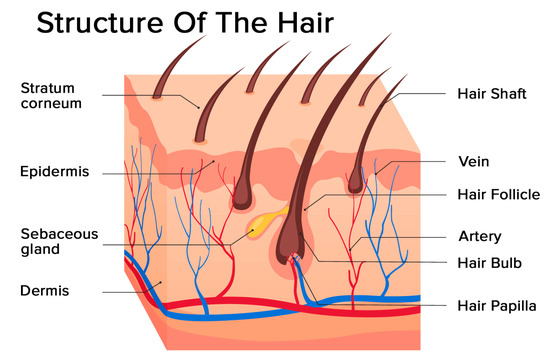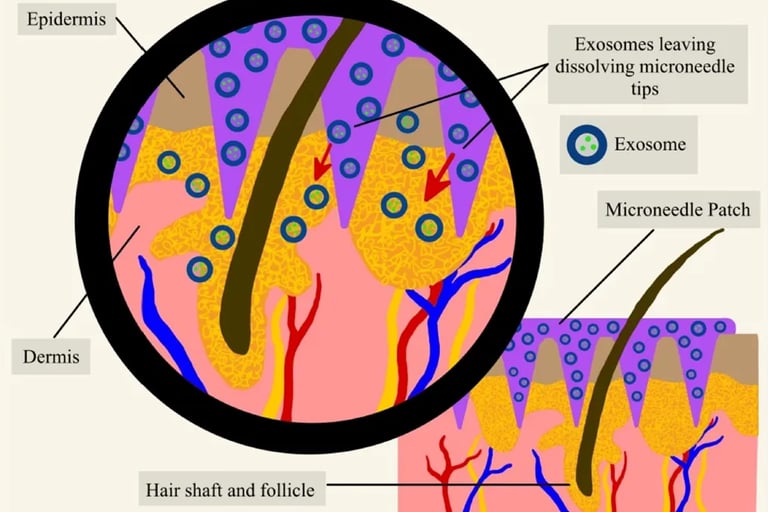Latest Clinical Trials on Exosome Therapy in Hair Care
5/19/20253 min read
From Lab Discovery to Real-World Promise
For millions of people around the world, noticing a receding hairline in the mirror can feel like the beginning of a long and frustrating journey. Androgenetic alopecia (AGA)—commonly known as male or female pattern baldness—is the most prevalent form of hair loss. Beyond the physical changes, it can deeply impact confidence and self-esteem.
Traditional hair loss treatments offer limited hope. Minoxidil may cause scalp irritation. Finasteride, while effective for some, comes with potential side effects like decreased libido. Hair transplantation, though more permanent, is invasive and costly—not to mention it doesn’t always guarantee results.
In the search for better solutions, a promising innovation has emerged from regenerative science: exosome therapy.
Why Has Treating Hair Loss Been So Challenging?
To understand why exosomes are generating such buzz, it's important to recognize how hair loss works. Clinically, hair loss falls into two broad categories:
Scarring (cicatricial) alopecia, where hair follicles are permanently destroyed.
Non-scarring alopecia, such as AGA and alopecia areata, where hair follicles aren’t dead—they’re dormant.
This dormancy is key. In cases of non-scarring alopecia, hair follicles may still be alive but have stopped functioning. If we could "wake them up," we could potentially restart hair growth. That’s exactly where exosome therapy could play a role.
What Are Exosomes—and Why Do They Matter?
Exosomes are nanoscale vesicles—tiny cellular messengers ranging from 30–150 nanometers in size. They’re released by stem cells (especially mesenchymal stem cells, or MSCs) and packed with powerful bioactive molecules such as: Proteins, Growth factors (like EGF), Messenger RNA (mRNA), MicroRNA (miRNA). Think of exosomes as nature’s delivery drones: they transport these molecules to target cells to influence regeneration and repair. For hair, this means potentially reactivating dormant follicle stem cells and restoring vitality to dermal papilla cells—the very cells responsible for hair formation.
Scientific Highlights
MSC-derived exosomes are rich in epidermal growth factor (EGF), which may nourish and stimulate hair follicles.
Some studies have identified miR-6765-3p, a microRNA in exosomes that may act like a "key" to unlock hair follicle regeneration.
Exosomes have shown the ability to penetrate the skin barrier, delivering their cargo directly to the base of the follicle.
While much of this research is still in early stages, the results have been promising enough to attract the attention of clinicians, researchers, and beauty professionals alike.




Recent clinical trials
Currently, clinical trials on exosome therapy for hair loss employ the following methods for effective delivery of exosomes to the scalp and hair follicles:
Intradermal Needle Injection: Directly injecting exosomes around the hair follicles in the scalp.
Microneedle Patch: Utilizing microneedle technology to load exosomes onto a patch, which then penetrates the stratum corneum of the skin to deliver exosomes to the hair follicles.
Clinical Results from one of the completed trials:
Hair density increased by 69%: Measured by photodendritometer, from a baseline of 96.5 hairs/cm² to 163.5 hairs/cm² after 6 weeks.
Hair shaft diameter thickened by 20%: Electron microscopy showed an increase from 0.049 mm to 0.059 mm.
Hair loss reduced by 60%: Daily hair count decreased from 200 hairs to 80 hairs.:
Hair density increased by 69%: Measured by photodendritometer, from a baseline of 96.5 hairs/cm² to 163.5 hairs/cm² after 6 weeks.
Hair shaft diameter thickened by 20%: Electron microscopy showed an increase from 0.049 mm to 0.059 mm.
Hair loss reduced by 60%: Daily hair count decreased from 200 hairs to 80 hairs.


